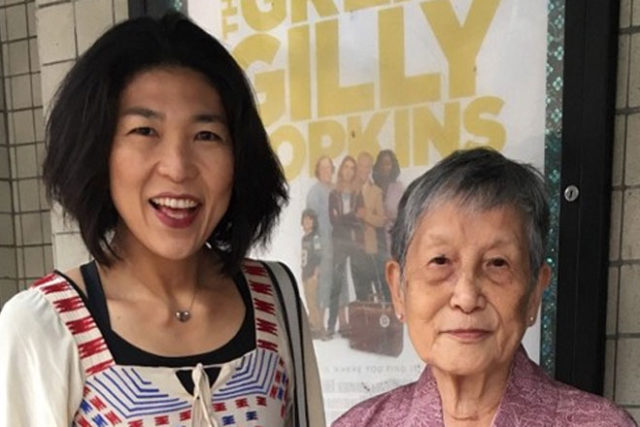By David Yamaguchi
The North American Post
Across this first year of writing weekly for the Post, my photographer and I have taken snapshots of various interesting things we see. The reason for this is that I don’t always know what topics will make the columns that I submit each week.
One early observation new to us is that local Japanese people occasionally attend special events in wafuku—Japanese traditional clothes. Such fashions include formal kimonos, some people go beyond that.
Accordingly, we began keeping our eyes peeled across the summer, hoping that we could complete a fashion shoot of three such images to collect into one column.
The first people who gave us the idea for such a column were two young friends, Saki Stone and Taka Kinjo, who attended Sanae Ishida’s “Sewing Happiness” book talk at Kinokuniya on June 11.
When I asked why they were dressed as they were—if they had come from somewhere else—they responded, no, that they had dressed specifically for the book talk, mainly because they have few opportunities to wear their wafuku in daily life.
We met our second “kimono lady” at the Gordon Hirabayashi play at Blaine Memorial United Methodist Church on June 26. There, Mari Wilson attended the play after her shamisen class nearby with teacher Tazue Sasaki. A frequent kimono-wearer, we would later find Mari dressed similarly in a summer issue of Ibuki Magazine, and at the Japan Fair 2016 in Bellevue on Sept. 3. I would also greet her kimono-clad again at the recent Densho 20th anniversary gala.
When one is looking for something, it can be hard to find. Thus it would not be until the Oct. 9 debut screening of the documentary “Ebb and Flow,” on the life of local oysterman Jerry Yamashita, that we would complete our quest.
There, Mrs. Eiko Bailey explained that she had altered her kimono into a two-piece outfit that she could wear without an obi. The retired seamstress and good friend of the Yamashitas commented that the wide Japanese sash cannot be put on properly without help.
Meeting these four elegantly dressed individuals enriched our summers. All were good enough sports to let us include their photos here. All three images still make us smile, despite the gathering wind and rain outside.
Why not consider wearing wafuku for your next community outing?










